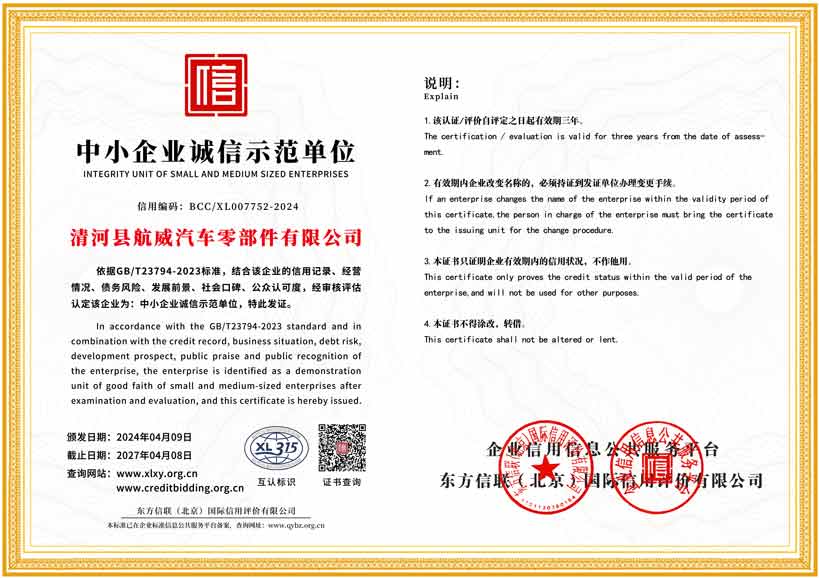push pull throttle cable
The Importance of Push-Pull Throttle Cables in Modern Machinery
In the realm of machinery and mechanical engineering, the components that facilitate control and maneuverability are paramount. Among these, push-pull throttle cables play a crucial role in a range of applications, from automobiles to industrial equipment. Understanding the significance of these cables can shed light on their functionalities and the advancements in technology that support their development.
What is a Push-Pull Throttle Cable?
A push-pull throttle cable is a type of control cable that transfers motion to and from a throttle mechanism. It operates by pushing and pulling the cable sheath, allowing precise control over the throttle position. When the operator pulls the throttle, the cable moves in one direction, while pushing it results in a motion in the opposite direction. This mechanism is essential for regulating engine output, particularly in applications where speed and performance are critical.
These cables are designed not only for durability but also for smooth operation. They consist of a flexible inner wire that actuates the throttle and an outer casing that provides guidance and protection. With advancements in materials and manufacturing techniques, modern throttle cables can withstand harsh operating environments, high temperatures, and stress, ensuring consistent performance over time.
Applications in Various Industries
Push-pull throttle cables are widely utilized across numerous industries. In the automotive sector, they play a vital role in controlling engine speed and acceleration in vehicles, motorcycles, and marine crafts. By allowing drivers to modulate the throttle input smoothly, these cables contribute significantly to driving comfort and vehicle responsiveness.
In agriculture, they facilitate the operation of machinery such as tractors and harvesters. Farmers rely on push-pull throttle cables to manage the power output of these machines effectively, which directly affects productivity and efficiency in the field. Similarly, in construction and heavy machinery, precise throttle control is essential for maximizing performance while ensuring safety.
push pull throttle cable

The Evolution of Throttle Cable Technology
The technology surrounding push-pull throttle cables has evolved significantly over the years. Earlier versions were often limited by the materials available and the complexity of the installation process. However, advancements in synthetic materials have led to the development of cables that are not only lighter but also exceptionally strong and resistant to wear.
For instance, modern cables often feature advanced coatings that reduce friction, enhancing the smoothness of operation. Furthermore, some designs incorporate insulation to protect against environmental elements, ensuring longevity and reliability. Innovations such as self-adjusting mechanisms also minimize maintenance needs, allowing for more efficient use in demanding applications.
Importance of Regular Maintenance
Despite their robust nature, regular maintenance of push-pull throttle cables is essential to ensure optimal performance. Over time, wear and tear can lead to reduced efficiency, increased friction, and even failure of the throttle system. Operators should routinely inspect the cables for signs of damage or fraying, lubricate moving parts, and adjust tension as necessary.
Addressing potential issues early can prevent more significant mechanical failures, ensuring uninterrupted operation. When it comes to safety, a malfunctioning throttle cable can pose serious hazards, particularly in high-speed or heavy-load applications.
Conclusion
In conclusion, push-pull throttle cables are integral components that significantly enhance the functionality of various machines. Their role in controlling engine output and ensuring smooth operation cannot be overstated. As technology continues to advance, these cables will likely become even more efficient and reliable, contributing to improved performance across multiple industries. Regular maintenance and a keen understanding of their operation will be essential for users to maximize the benefits these cables offer, ensuring they remain a cornerstone of mechanical control systems.
-
Workings of Clutch Pipe and Hose SystemsNewsJun.04,2025
-
The Inner Workings of Hand Brake Cable SystemsNewsJun.04,2025
-
The Secrets of Throttle and Accelerator CablesNewsJun.04,2025
-
The Hidden Lifeline of Your Transmission Gear Shift CablesNewsJun.04,2025
-
Demystifying Gear Cables and Shift LinkagesNewsJun.04,2025
-
Decoding Clutch Line Systems A Comprehensive GuideNewsJun.04,2025
